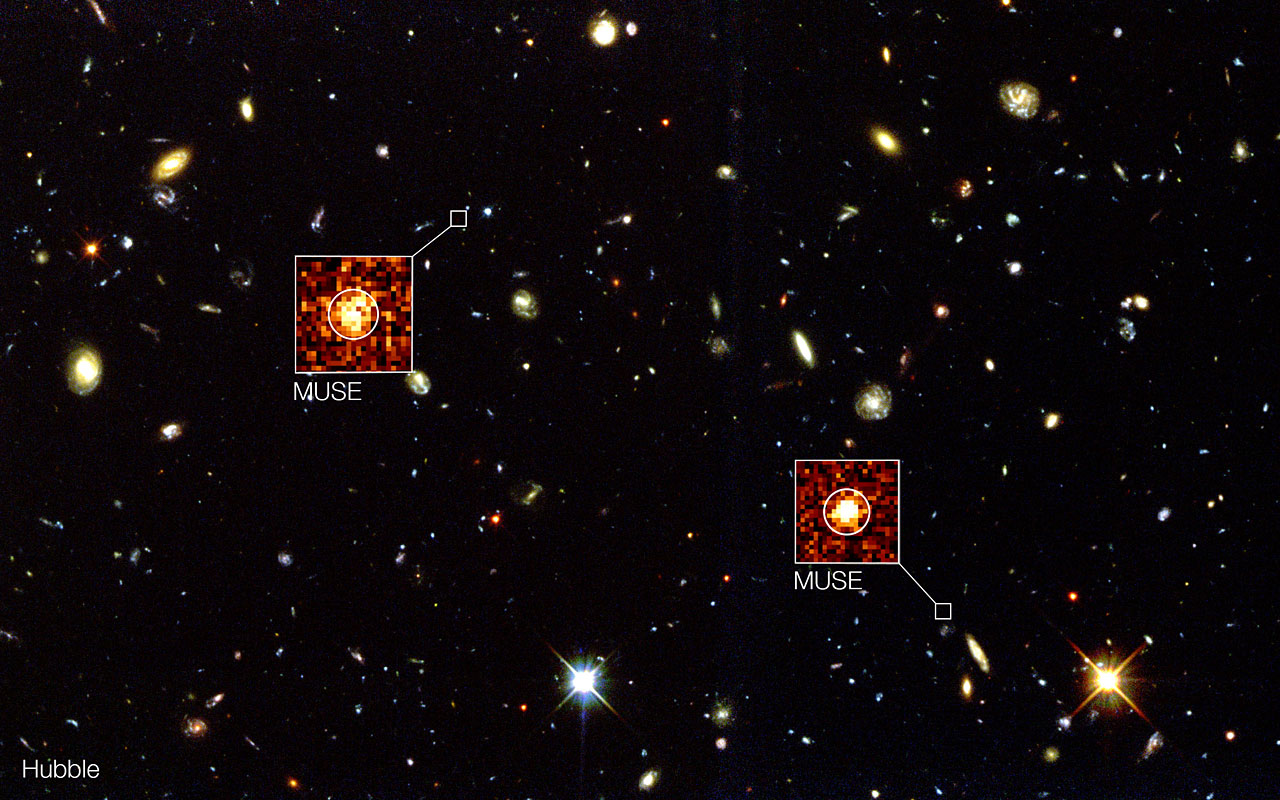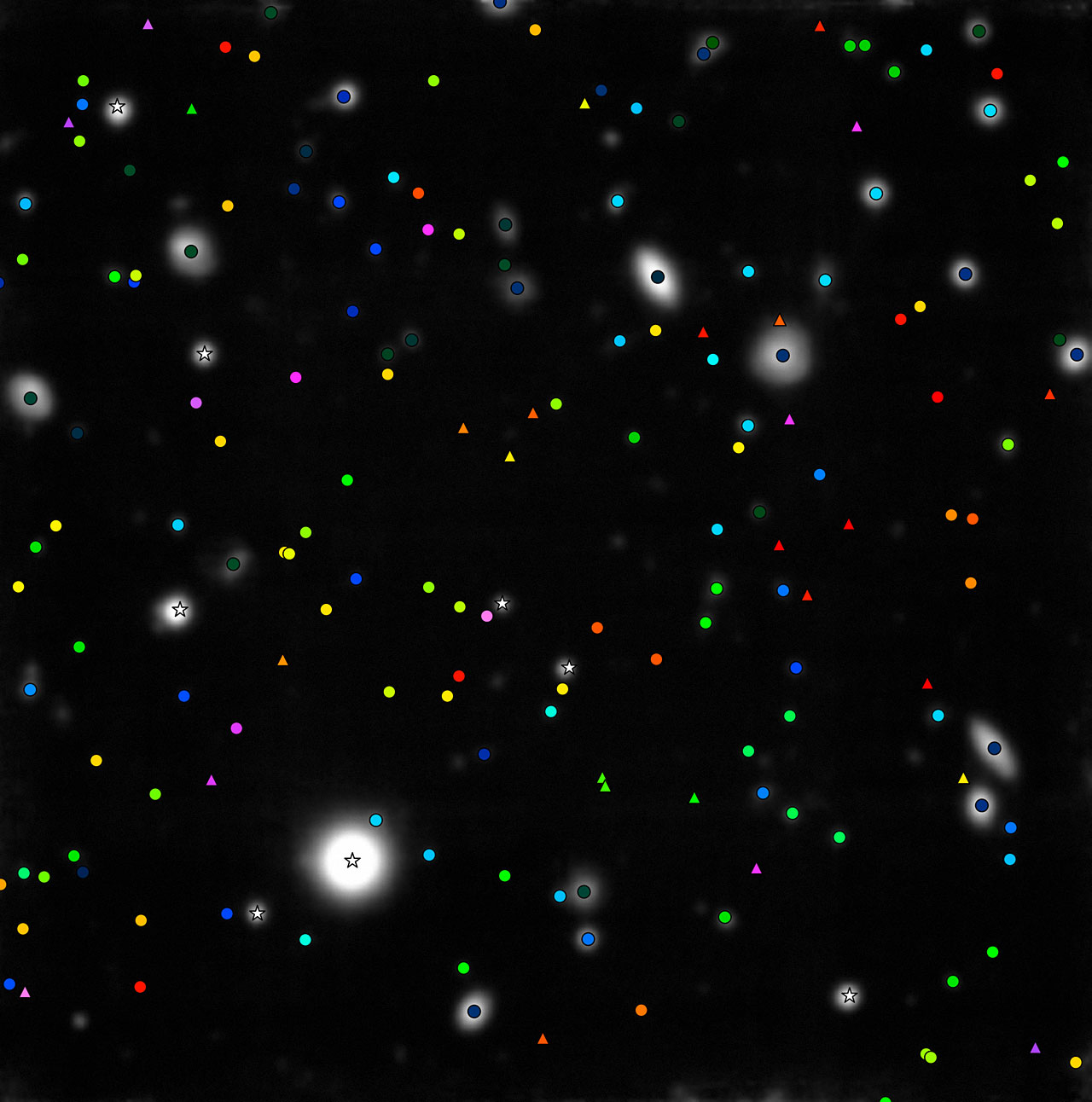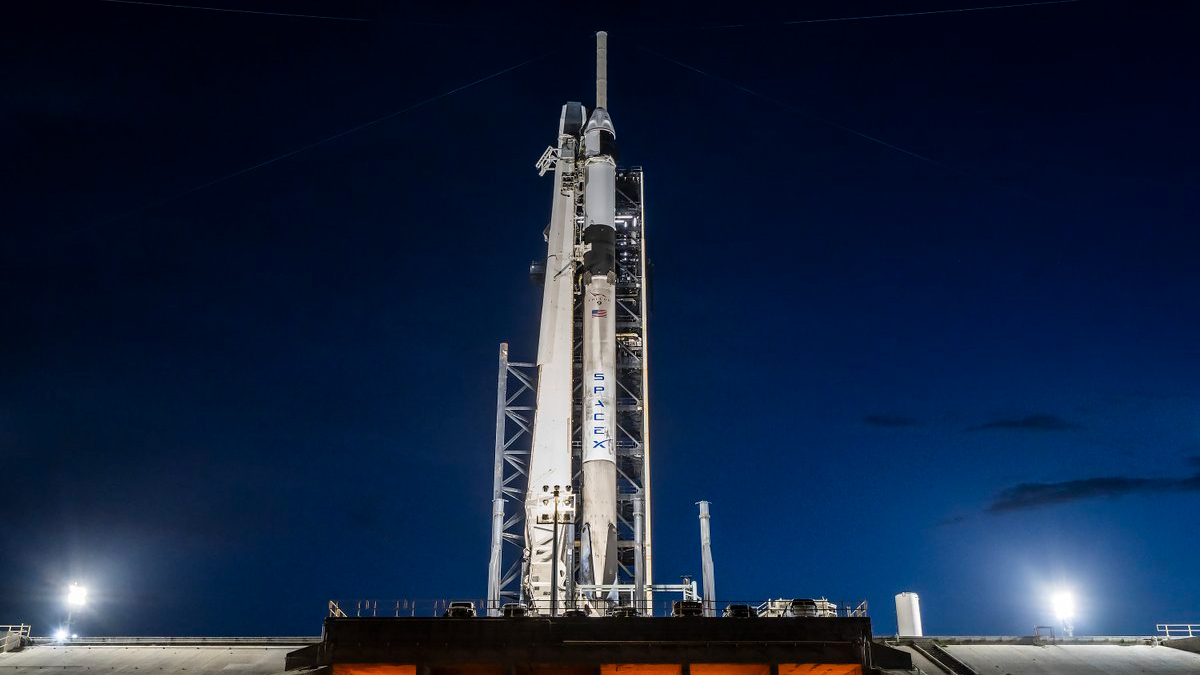Best 3D View of Deep Universe Reveals Astonishing Details (Video)

Astronomers have just released a brand-new, best-ever 3D view of the deep universe, and it's a doozy.
The amazing new photo, released by the European Southern Observatory (ESO) today (Feb. 26) reveals never-before-seen cosmic objects in a relatively small patch of sky. The MUSE instrument on ESO's Very Large Telescope in Chile spent 27 hours staring at the Hubble Space Telescope's Deep Field South region, helping scientists learn more about far-flung galaxies. You can learn more about the photo in a video about the amazing 3D view of the universe as well.
Scientists are using the new image to gather new information about the distance, speed, composition and other details about the galaxies spotted by MUSE. Astronomers have measured the distances to 189 galaxies with the 3D data, ESO officials said in a statement about the photo released today. [Hubble Space Telescope's Latest Cosmic Views (Photos)]

"After just a few hours of observations at the telescope, we had a quick look at the data and found many galaxies — it was very encouraging," Roland Bacon, principal investigator of the MUSE instrument, said in the same statement. "And when we got back to Europe we started exploring the data in more detail. It was like fishing in deep water and each new catch generated a lot of excitement and discussion of the species we were finding."
Hubble took its first deep-field image in 1995, and since then, it has taken other images of the distant universe, revealing more newfound galaxies along the way.
The Hubble Deep Field South image was captured over the course of 10 days in 1998, giving scientists and the public a new view of galaxies in the deep universe. MUSE has now revealed more than 20 extremely faint objects not seen in the deep-field image, ESO officials said.
"The greatest excitement came when we found very distant galaxies that were not even visible in the deepest Hubble image," Bacon said. "After so many years of hard work on the instrument, it was a powerful experience for me to see our dreams becoming reality."
Breaking space news, the latest updates on rocket launches, skywatching events and more!

The galaxy distances measured by MUSE were varied, according to ESO. Some formed relatively recently, while others "were seen when the universe was less than one billion years old," ESO officials said.
Astronomers are now planning on training the instrument's gaze on other parts of the sky, originally images captured by Hubble.
"Now that we have demonstrated MUSE's unique capabilities for exploring the deep universe, we are going to look at other deep fields, such as the Hubble Ultra Deep field," Bacon said. "We will be able to study thousands of galaxies and to discover new extremely faint and distant galaxies. These small infant galaxies, seen as they were more than 10 billion years in the past, gradually grew up to become galaxies like the Milky Way that we see today."
Follow Miriam Kramer @mirikramer. Follow us @Spacedotcom, Facebook and Google+. Original article on Space.com.
Join our Space Forums to keep talking space on the latest missions, night sky and more! And if you have a news tip, correction or comment, let us know at: community@space.com.

Miriam Kramer joined Space.com as a Staff Writer in December 2012. Since then, she has floated in weightlessness on a zero-gravity flight, felt the pull of 4-Gs in a trainer aircraft and watched rockets soar into space from Florida and Virginia. She also served as Space.com's lead space entertainment reporter, and enjoys all aspects of space news, astronomy and commercial spaceflight. Miriam has also presented space stories during live interviews with Fox News and other TV and radio outlets. She originally hails from Knoxville, Tennessee where she and her family would take trips to dark spots on the outskirts of town to watch meteor showers every year. She loves to travel and one day hopes to see the northern lights in person. Miriam is currently a space reporter with Axios, writing the Axios Space newsletter. You can follow Miriam on Twitter.
